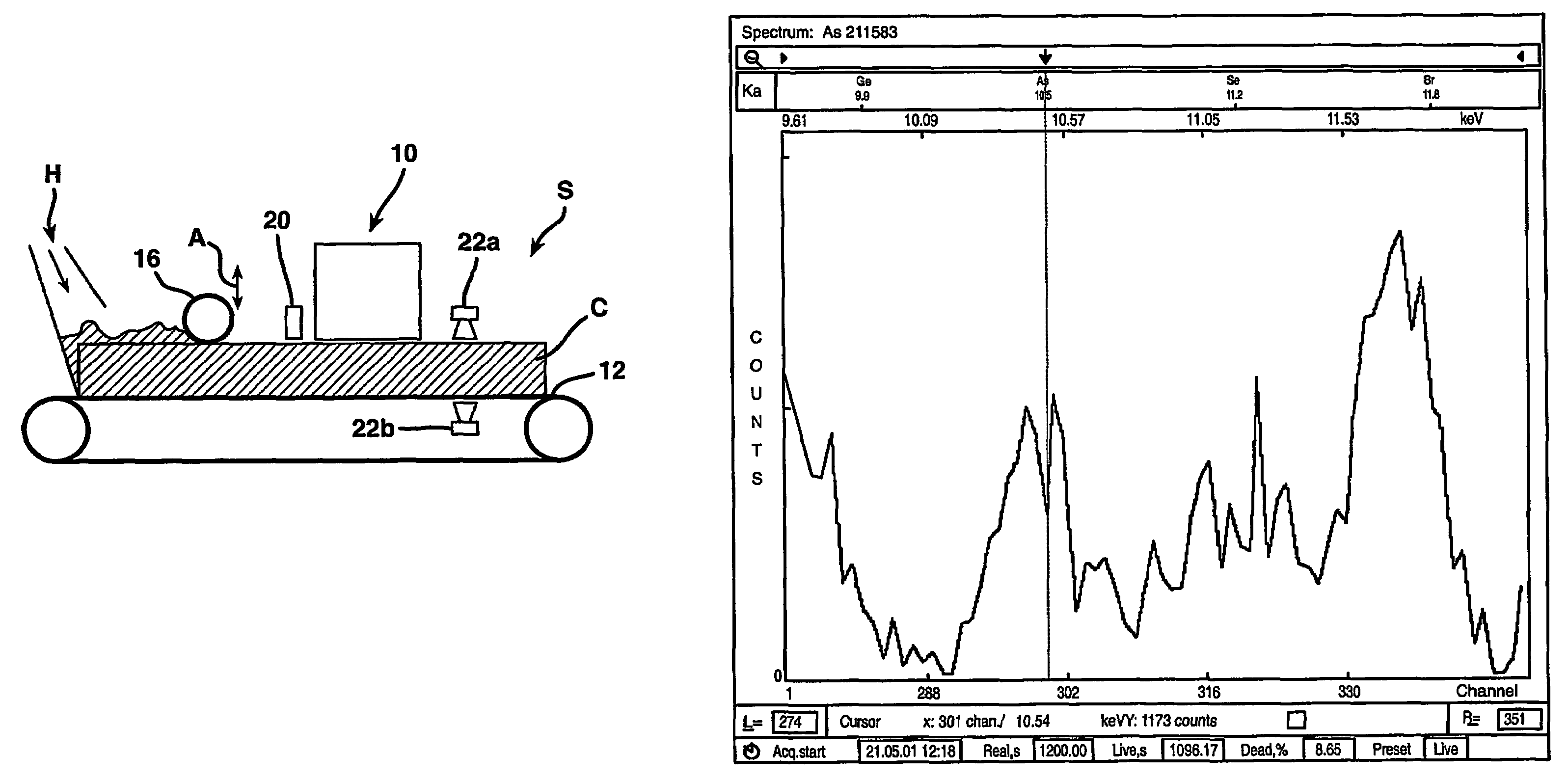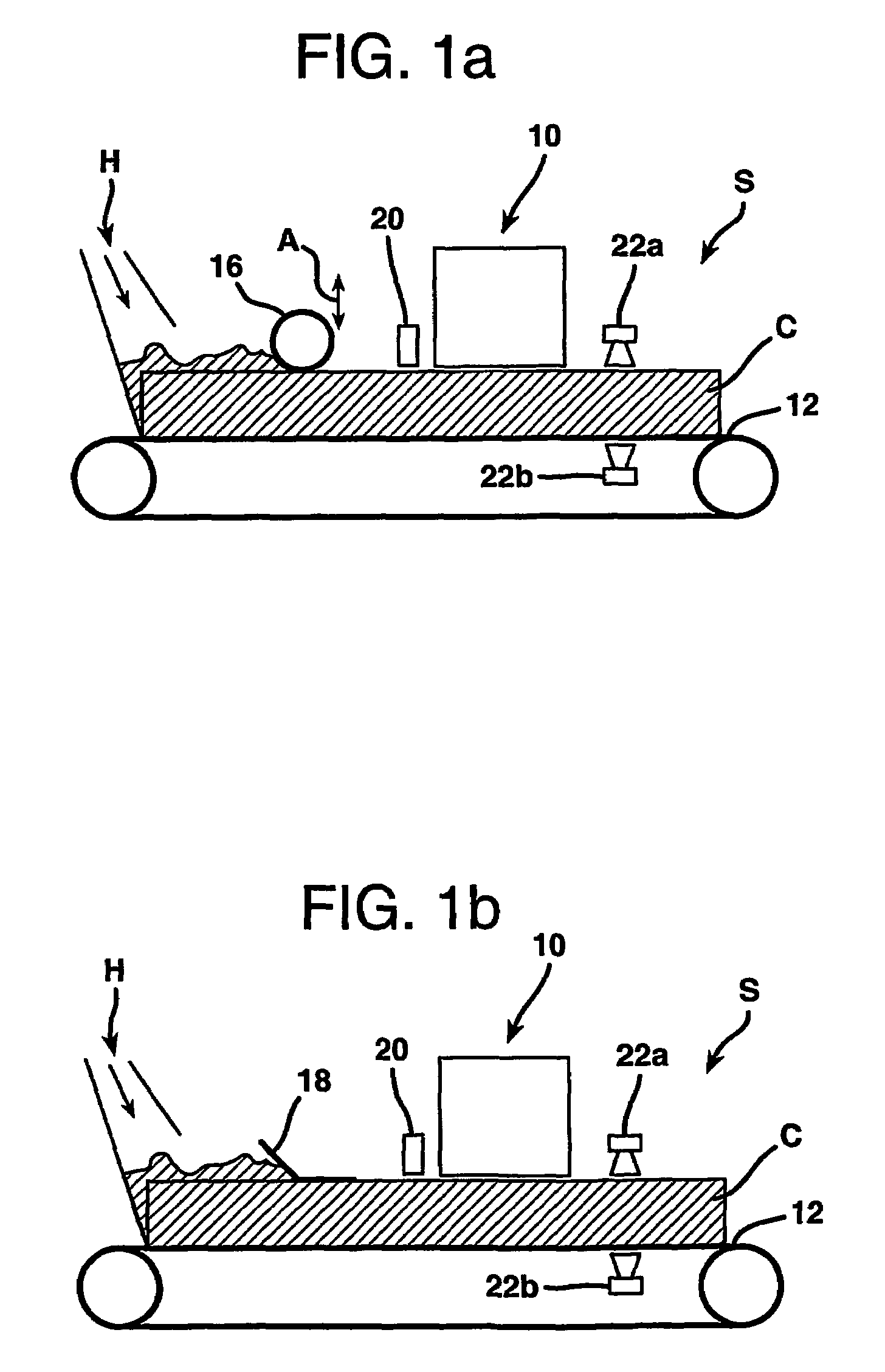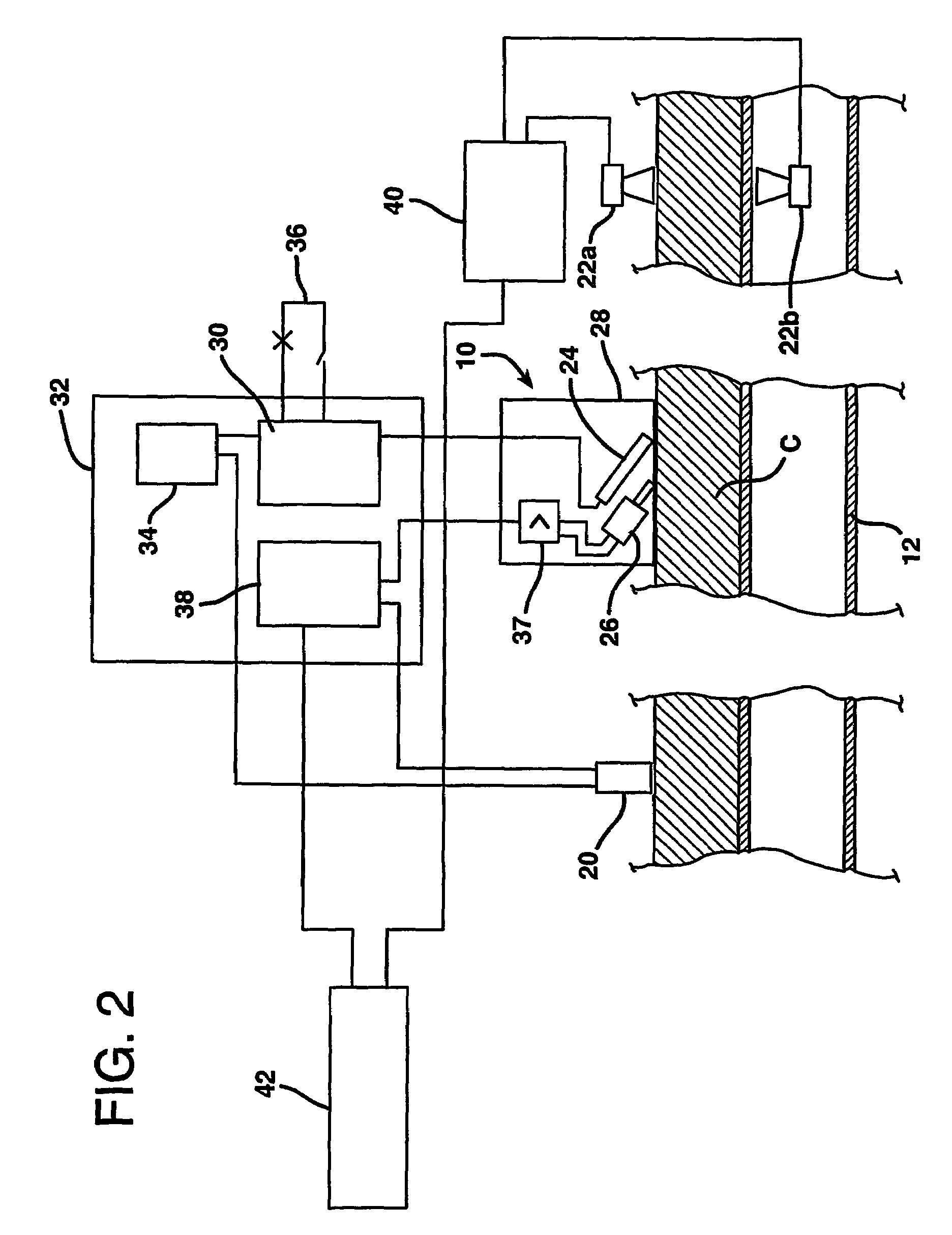X-ray fluorescence measuring system and methods for trace elements
a fluorescence measuring system and trace element technology, applied in the direction of material analysis using wave/particle radiation, x/gamma/cosmic radiation measurement, instruments, etc., can solve the problems of inability to measure trace elements, time-consuming wet chemistry methods dictated by standard laboratory methods, and inability to produce single analysis, etc., to achieve the effect of reducing interference, enhancing results, and maximizing emission efficiency
- Summary
- Abstract
- Description
- Claims
- Application Information
AI Technical Summary
Benefits of technology
Problems solved by technology
Method used
Image
Examples
Embodiment Construction
[0021]Reference is now made to FIGS. 1a and 1b, which show one embodiment of an XRF trace element sensor 10 mounted adjacent to an endless transfer conveyor belt 12 carrying a substance or material, such as coal C. The belt 12 and sensor 10 in combination may form part of a mechanical sampling system 14 for measuring the elemental composition of a sample of material, such as ore or coal C delivered from a chute H or the like. The sample may be supplied from a main conveyor line (not shown), and is preferably crushed or pulverized to have a particle size of approximately less than or equal to 10 millimeters (⅜ths of an inch) prior to being delivered to the sampling system 14.
[0022]In this system 14, a leveling structure and skirting (not shown) along the sides of the belt 10 together help to assure that a constant or substantially constant geometry of coal C or other substance is presented to the sensor 10 forming part of the system 14. In FIG. 1a, the leveling structure is shown as ...
PUM
| Property | Measurement | Unit |
|---|---|---|
| thickness | aaaaa | aaaaa |
| angle | aaaaa | aaaaa |
| atomic number | aaaaa | aaaaa |
Abstract
Description
Claims
Application Information
 Login to View More
Login to View More - R&D
- Intellectual Property
- Life Sciences
- Materials
- Tech Scout
- Unparalleled Data Quality
- Higher Quality Content
- 60% Fewer Hallucinations
Browse by: Latest US Patents, China's latest patents, Technical Efficacy Thesaurus, Application Domain, Technology Topic, Popular Technical Reports.
© 2025 PatSnap. All rights reserved.Legal|Privacy policy|Modern Slavery Act Transparency Statement|Sitemap|About US| Contact US: help@patsnap.com



